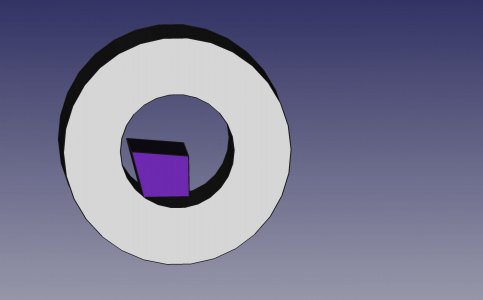- Joined
- Feb 25, 2021
- Messages
- 3,130
Here's a picture of a typical boring bar (purple) inside a bore.
This boring bar has the top ground with some rake, and left side with some relief.
Note that the contact point is not the cutting edge. It is the bottom edge which is dull. So it rubs.

To get the top cutting edge to be the contact edge, there are several approaches.
1) Move the boring bar up in the hole.
2) Turn the boring bar counter clockwise slightly to give more effective clearance.
Both accomplish the same thing (its rotationally symmetric). You decrease the rake angle to increase the clearance angle.
3) regrind the bottom edge of the cutting tool to round it out so it clears.
If you're so inclined (given STEM in the username), you can play with the trig to put numbers around this. Even small deviations from centerline/angle make a significant difference. Think about the cutting forces inducing a .005 downward deflection in the boring bar for example.
This boring bar has the top ground with some rake, and left side with some relief.
Note that the contact point is not the cutting edge. It is the bottom edge which is dull. So it rubs.

To get the top cutting edge to be the contact edge, there are several approaches.
1) Move the boring bar up in the hole.
2) Turn the boring bar counter clockwise slightly to give more effective clearance.
Both accomplish the same thing (its rotationally symmetric). You decrease the rake angle to increase the clearance angle.
3) regrind the bottom edge of the cutting tool to round it out so it clears.
If you're so inclined (given STEM in the username), you can play with the trig to put numbers around this. Even small deviations from centerline/angle make a significant difference. Think about the cutting forces inducing a .005 downward deflection in the boring bar for example.
Last edited:

